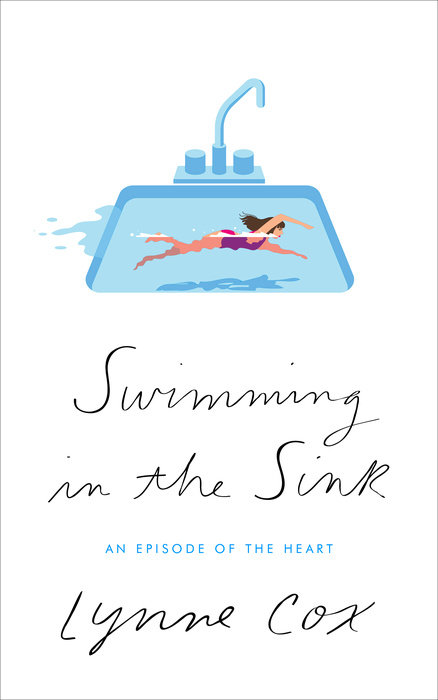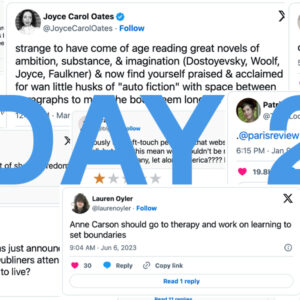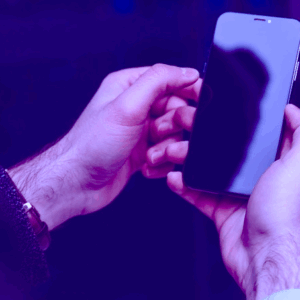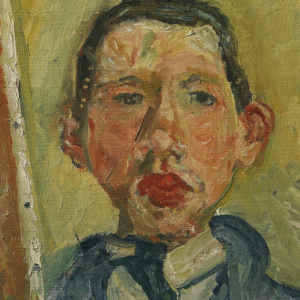I thought it would be easy to immerse my hand in a bucket of thirty-two-degree Fahrenheit water (zero degrees centigrade). I swam across the Bering Strait wearing a swimsuit in thirty-eight-degree Fahrenheit water (three degrees centigrade). I swam for two hours and six minutes and reached Russian shores. The water temperature in the bucket was only six degrees colder than the Bering Strait, but my hand ached. It was shouting at me to lift it out.
I was jet-lagged and sitting wearing a swimsuit in a laboratory at the University of London. Dr. William Keatinge, one of the world’s experts on the effects of cold on the human body, had asked me to participate in the study. He was measuring blood flow into and out of my hand in the cold. The goals of his studies were to contribute to medical research and learn more about how people survive in cold water.
There were monitoring devices attached to me: thermocouples on the fingers of my left hand, forehead, and right toe measuring my skin temperature. I had a rectal probe—a thin wire inserted in my body—measuring my core temperature.
Dr. Keatinge was standing near the monitoring devices with two researchers. They were watching the screens, and Dr. Mattie Scarborough, an internist, was sitting beside me to make sure I was okay.
I focused on the pace clock in front of me. The clock had two hands. The red hand was the second hand and the black hand was the minute hand. The red hand seemed to be moving slowly. It seemed like the seconds were minutes. I didn’t think I would be so uncomfortable. I tried to focus on my breathing. My breathing was fast. I was anxious. I never knew what to expect when I was asked to participate in research tests. I should have known it would be challenging. These tests always were. I knew how to train for channel swims and I knew how to adapt to unexpected situations, but these tests were different. I had to push myself mentally and physically in ways I had never done. I never knew what would happen or what the outcome would be. It was exciting to explore with the researchers, and learn things we didn’t know, but it was also challenging, and sometimes frightening.
How could six degrees Fahrenheit make that much difference? I thought my hand would adjust to the cold and it would relax; that’s what happened when I swam in cold water. But my hand felt different in the bucket. It felt as if it were freezing to an ice tray. The pain made me queasy.
Dr. Keatinge warned me that the test could be difficult. He had run other tests on me, and he had accompanied me on my Bering Strait and Beagle Channel swims. These were swims that hadn’t been done before. He was on the support boat to observe me and make sure I didn’t go into hypothermia and die. Dr. Keatinge thought that I was very different from other people he studied. He was right.
From the moment I was born, my parents knew I was different. I was born almost a month early. My parents were worried. They weren’t sure I would survive. My body was covered with fine, soft, wooly hair. My mom said that I looked like a little seal. They had never seen a baby covered with downy hair. It was a sign for them that I was going to be different. They worried when I was born because I weighed only five pounds. But I quickly put on weight, and I grew larger and much stronger than other children my age. I think it was a survival mechanism that kicked in.
My parents now worried that I was larger than other children, and my dad, who was a radiologist, had me tested. The pediatrician discovered that I have an efficient metabolism, which helped me thrive and become an endurance athlete. My parents encouraged me to swim, and I discovered that I loved being in the water more than on land.
I was lucky; at an early age I discovered something I would always love. I was lucky, too, because my parents always supported me and gave me a lot of freedom.
When I was only six years old, they let me visit the neighbors on my own. The neighbors were from all over the globe. I was intrigued by their differences, because I was different too. They told me stories about their childhoods and why they decided to come to America. They told me America was a special place where they could live their dreams while continuing to celebrate their cultures. They brought the art, food, and music from their homelands. Knowing them enriched my world and made me realize that being different was good.
My dad said that the color of one’s skin is only a wrapping. It doesn’t matter. Everyone is human. Everyone needs to be cared for. My mom was an artist. She loved to paint pictures of people with different skin colors and physical characteristics. She said their differences made them beautiful. I realized that it was the differences among us that made life fascinating.
My neighbors liked me because I was different. Mrs. Smith said I was patient and determined. She liked me to visit her, and we had tea and cookies with her three orange cats and Heidi, her huge German shepherd with large white fangs.
Heidi had long shiny brown and tan fur and large brown eyes. She looked so soft and beautiful and I wanted to pet her, but Mrs. Smith said she would bite people who were not members of the family. My friends were afraid of Heidi and would never have petted her, but I thought I could find a way for her to like me. I took this on as a challenge.
One day when Beth, my Dalmatian, and I were walking past Mrs. Smith’s home. Heidi ripped through the front screen door and attacked Beth, putting five large bloody punctures in her back. Beth was howling in pain as she ran home.
Heidi frightened me, but she was gentle with Mrs. Smith. She would put her head in Mrs. Smith’s lap and nudge her arm with her wet black nose so Mrs. Smith would pet her.
I thought that if I was patient, Heidi would give me a chance. I visited Mrs. Smith every day, sat on her couch, and began by sticking out my index finger when Heidi walked past, so she would feel my touch. The first time I did it, she turned and glared at me. I thought she was going to bite me. But she just walked away. I was scared, but I did it again the next day, and the day after that.
I was patient. After a month I touched her with four fingers, and then one day she walked over to me and put her large head in my lap. I could feel the heat from her head, and I could feel her heart beating. Mrs. Smith said I could pet her.
Heidi had brown fur on her ears and muzzle that was so soft, and she closed her eyes when I scratched behind her ears. She was in bliss. I visited her every day after that. She walked beside me around the house, and she sometimes grabbed my hand in her mouth and asked me to pet her. But I always waited until I was sitting down and she put her head in my lap. She looked at me like she loved me. Her eyes were soft, and her mouth opened into a smile. We became friends. I learned that by being patient and persistent I could do what I wanted to do.
Sometimes Dr. Smith would come home when I was visiting his family. Dr. Smith, the oldest doctor in the neighborhood, had thin white hair and thick glasses, and he was always serious. I was a little afraid of him, but one day, I asked him if he liked cutting people open.
He seemed surprised and said he had never been asked that question. He said he didn’t enjoy it, but it was what he needed to do to help people. He removed organs that were diseased or defective and repaired organs that were affected by an injury. I was fascinated by his abilities. He knew so much about life and the way the body functioned. My friends weren’t interested in medicine, or in spending time talking with adults, but I was thrilled to hear his stories. I sought out the other doctors in the neighborhood to learn from them as well.
Dr. Duffy lived around the corner. He was an anesthesiologist and his daughter was my best friend. I would play with my friend and wait for him to come home after work. Dr. Duffy spoke with a slight Irish accent. He was short, bald, had bright blue eyes, and loved explaining how he put patients into a state of suspended animation so they wouldn’t feel pain during surgery. I thought it was magic that he could put them to sleep so they didn’t feel a thing.
Our other neighbor, Dr. Tung, was an anesthesiologist too. He studied anesthesiology in China and also did acupuncture. He explained how he inserted needles into different parts of the body to open passageways and reduce pain. It was difficult for me to imagine that sticking needles into someone’s body could help relieve pain, but I believed him.
And I visited Dr. Nenopoulos. His daughter was my friend. He was an ob-gyn and he knew I was a swimmer. He told me intriguing things about life. He said that babies swam around in their mothers’ stomachs in salt water for nine months. When they were born, he caught them, and then they took their first breath. He said that moment always seemed like a miracle to him, and it did to me too.
I loved learning about life and being with Arthur Daviau, my grandfather. He was a doctor and a long-distance swimmer who swam across cold-water lakes in Maine. He believed that genes had a great bearing on people’s health and development. I thought I inherited my love for and acclimatization to cold-water swimming from him. He thought so too.
My grandfather was a public health doctor and he knew that there were illnesses that were genetically carried in families. His cousin, Victor McKusick, was a geneticist at Johns Hopkins University, and he agreed. My grandfather knew that people could inherit good genes too. I thought I inherited his good genes and that predisposed me to becoming a long-distance swimmer. I trained for years in cold water and I thought I was acclimated to the cold and that the cold-water immersion would be easy. But this test was the most difficult and excruciating I had ever endured.
I glanced at my hand in the bucket. It looked strange with the thermocouples attached to my fingers. My hand was ghostly white and shaped like a claw. When I swam across the Bering Strait my hands turned gray, but they never turned white.
The frigid water was shutting off blood flow to my hand. It wasn’t receiving oxygen or warmth. I think the tissues were suffocating and starting to freeze. I wanted to open and close my hand to pump blood, warmth, and oxygen into it, but I wasn’t supposed to move. That would interfere with the test.
Dr. Keatinge was standing near the entrance of the lab with two researchers. They were checking the monitors.
“Lynne, are you okay?” Dr. Keatinge asked. His blue eyes focused on me and his face was full of concern.
I nodded. I wasn’t, but thought I would be.
He encouraged me. “We’re getting good readings. They will be helpful.”
I reminded myself that I was doing this for a higher purpose, to further medical research. My dad had encouraged me to participate in cold studies. He said that in the future doctors would cool patients before heart surgeries to slow body functions and after heart attacks to reduce damage to the heart and give it time to recover. Doctors would cool patients after spinal and brain injuries to reduce swelling and trauma. The tests could also help researchers figure out how to rewarm people after lifethreatening cold exposure and increase their chances of survival.
The tests that were being conducted on me were already helping people. Dr. Richard Edlich, an emergency room doctor at the University of Virginia, had read Dr. Keatinge’s studies and contacted me about the cold studies I was participating in at the University of California, Santa Barbara, and the University of London. Dr. Edlich had multiple sclerosis and was trying to figure out how to improve treatment for the illness. He explained that people who have multiple sclerosis often have problems with balance, maintaining muscle strength, and spasticity. Heat and cold water could exacerbate spasticity. He experienced these symptoms, but he started swimming in cold water, and that helped him regain his muscle strength and balance, and reduced his spastic episodes. He discovered that if he swam in cool water for thirty minutes or more he experienced what he called a “halo effect.” After he climbed out of the swimming pool he was able to walk normally for two to three hours. He wondered if he could prolong this effect if he acclimated to lower water temperatures. But he had to make sure his core temperature didn’t drop or he would shiver, his movements would become spastic, and he would have difficulty swimming and walking.
We discussed my training methods for acclimating to cold water and he adapted my process to his workouts. After a few months, he was able to swim in cooler water, for longer periods of time, and prolong the halo effect. He shared what he learned with other researchers. It helped me to remember him while I had my hand in the bucket of ice water. I hoped Dr. Keatinge’s research would provide more answers to medical questions. But it was extremely difficult to stay focused on positive thoughts.
The pain was beyond anything I had ever experienced. I told myself that if I quit, the money, time, and effort everyone had invested in the tests would be wasted. It would be embarrassing. I had to endure. I wondered how I could interrupt the pain signals to my brain and break the pain cycle.
Out of the corner of my eye, I watched Dr. Scarborough. He was leaning forward in his chair. His large brown eyes were focused on me. His brow was deeply furrowed and his lips were pursed together.
I stared at the pace clock. I couldn’t believe how long it took for one second to pass. It was strange how pain changed one’s perception of time. When I trained in a swimming pool and used a pace clock the seconds flew by.
I dug my nails into my right hand and hoped I could trick my brain. If my right hand hurt some, I thought it would diminish the pain in my left hand, but it didn’t help.
Dr. Scarborough had asked me to call him Mattie. He had not participated in this cold-water test, but the two researchers conducting the test had. Mattie monitored the research subjects to make sure they were medically safe and consulted with the researchers. He explained that part of the protocol for conducting research on human subjects was dictated by the Nuremberg Code, a set of research ethics for human experimentation that was established as a result of the Nuremberg Trials after World War II. The code called for researchers to experience a study themselves before they tested other human subjects—and most did so. They believed it gave them a greater understanding of what the subjects were experiencing.
Dr. Keatinge couldn’t participate in the cold-water study because he had Raynaud’s disease, which caused blood vessels in his hands to overreact painfully to the cold. The arteries in his fingers went into vasospasm, a sudden restriction of vessels that dramatically limits blood flow. The condition was extremely painful. He said he was lucky he had a mild case. Some people lost their fingers and toes because of the disease. I wondered if his affliction motivated him to study the effects of cold on people.
Dr. Keatinge glanced at me and realized I was struggling. He knew me well. We had met when I was a student at the University of California, Santa Barbara, and Dr. Barbara Drinkwater, Dr. William McCafferty, and Dr. Steven Horvath were studying me at the Institute of Environmental Stress. During one test, I swam in 50 degree Fahrenheit water (10 degrees centigrade) for four hours and my core temperature increased from my normal temperature of 97.6 degrees Fahrenheit (36.4 degrees centigrade) to 102 degrees Fahrenheit (38.8 degrees centigrade). The researchers couldn’t believe my results. When people are immersed in 50 degree Fahrenheit water (10 degrees centigrade) their core temperature drops, and the longer they stay in the water, the more their temperature drops.
The tests Dr. Drinkwater, Dr. McCafferty, and Dr. Horvath ran on me confirmed that I was in tune with my body, that I was training it to not only survive but to be stronger and excel in the cold water. I needed that confirmation. The coach I had before I entered university convinced me that I needed to swim six hours a day in a single workout in the ocean to break the world record for swimming the Catalina Channel. After those workouts, I was exhausted, too tired to sleep, and I had no appetite.
I attempted the Catalina crossing, but when I was more than halfway across the channel, and two hours ahead of the world record, I did not care. I decided I wanted to get out. I stopped swimming. For more than an hour I treaded water and argued with my crew. I told them I was burnt out. The crew concluded that there was nothing wrong with me. They convinced me to continue swimming because they thought I would regret quitting. I struggled but worked through my negativity and became the fastest person to swim the Catalina Channel.
A few days later, I decided I was done channel swimming. I was so tired of it, I couldn’t look at the ocean. I told my parents I had decided to quit swimming. They said I could do whatever I wanted to do, so I visited friends, read books, and went to see movies.
A few months later, I heard the call of the ocean in the sea breeze rustling the palm trees in front of my home. I smelled the sharp notes of salt, felt the cool moist air awaken my body, and felt the pull of the tide that grew stronger as the moon grew fuller. I missed diving into clear cool blue water, the feeling of the waves lifting and embracing me. I missed the joy and strength that swimming gave me. I knew I had to return to the water, but I needed to do something different.
There were only a few people attempting long-distance open-water swims, and fewer swimming in cold water, and there weren’t any coaches who specialized in openwater swimming. I realized that I knew how my body responded to stress better than a coach. While I was in college, I decided to coach myself, but I knew I needed to do something more to become faster, and stronger, and swim in colder waters. To accomplish this, I studied and spoke with world-class athletes, learned how they trained, and figured out how to translate elements of their training to open-water swimming, to my training. Their help was invaluable, but I realized I needed to do more to excel in sports and in life.
I looked at the pace clock. It was ridiculous. I could swim across frigid oceans, but I was fighting to keep my hand in a bucket of ice water. For some reason I told myself the pain would disappear in nine minutes. My hand would be used to the water and I would be okay. I don’t know why I told myself that.
I watched the black minute hand move. Nine minutes passed. I looked at my hand. It was snow white and full of pain so I glanced at kind and caring Mattie. His curly brown hair and large dark-rimmed glasses made his face look pale. There were black circles under his eyes. He looked exhausted.
One researcher asked me to lift my hand out of the water and straighten my fingers. He ran an infrared wand over my hand to measure heat flow into and out of my hand, then he asked me to put my hand back into the bucket. I wondered how long I could do it. I never knew that the more intense pain became, the more energy it took to fight it. I was trying to figure out if there was a way around the pain or a way to let go and not fight it.
Dr. Keatinge said everything was going according to plan. He left to check on some things in his office.
I looked at Mattie.
“Do you need to stop?” he asked, and grabbed a towel.
From SWIMMING IN THE SINK. Used with permission of Knopf. Copyright © 2016 by Lynne Cox.













